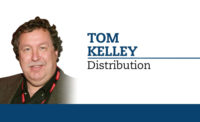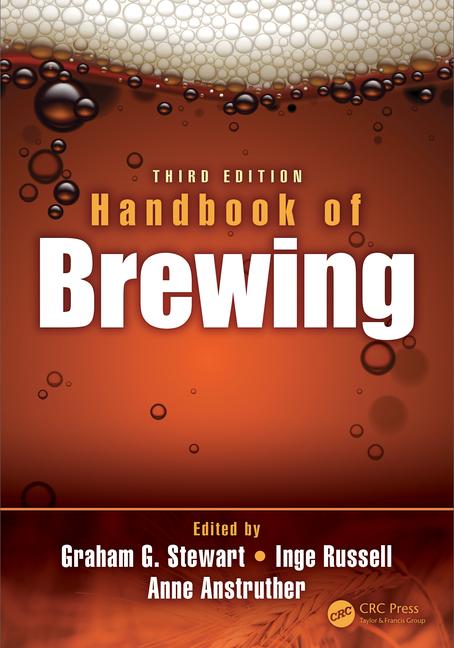Fuel Costs On Your Mind
BY ELIZABETH FUHRMAN
The national average for gasoline has been hovering around $3 per gallon at presstime, which is the highest it has been since hurricane damage caused a gasoline price surge last fall. The Lundberg Survey, which monitors 7,000 filling stations nationwide, indicates that within the next few weeks the U.S. average fuel price will surpass the highest price it has ever reached per gallon. The average is currently only pennies away from the March 1981 peak, which adjusted for inflation, soared to a little more than $3 a gallon.
“We have a serious problem,” said
President George Bush, during his State of the Union address in January.
“America is addicted to oil, which is often imported from unstable
parts of the world."
Serious it is. And it’s not only affecting
retail gasoline but diesel fuel, which reached more than $2.92 per gallon
this month for the national average, peaking at $3.09 in California and at
its lowest average of $2.86 in the lower Atlantic and Gulf Coast, reported
the Energy Information Administration. With no indication that gasoline or diesel fuel prices
will fall any time soon due to both natural and
manmade causes, including unrest in the Middle East, the impact on
distribution and industry is paramount.
The industry and government are stepping up with solutions to help. The U.S. Environmental
Protection Agency (EPA), U.S. Army, UPS, International Truck and Engine
Corp. and Eaton Corp. released the first-ever hydraulic hybrid diesel urban
delivery vehicle, which will provide improvements in fuel economy and
emission reductions.
The EPA and UPS plan to evaluate the vehicle’s
fuel economy performance and emissions during a series of tests in 2006. In
laboratory testing, the EPA’s hydraulic hybrid diesel technology
achieved a 60 to 70 percent improvement in fuel economy and more than 40
percent reduction in carbon dioxide emissions, compared to a conventional
UPS vehicle.
The EPA says laboratory tests show the technology has
the potential to dramatically improve the fuel economy of urban vehicles
used in applications such as package delivery, shuttle and transit buses
and refuse pick-up. The EPA also estimates that when manufactured in high
volume, the added costs of the hybrid components could be recouped in less
than three years through lower fuel and brake maintenance costs.
In the hydraulic hybrid diesel, a high-efficiency
diesel engine is combined with a unique hydraulic propulsion system,
replacing the conventional drivetrain and transmission. The vehicle uses
hydraulic pumps and hydraulic storage tanks to store energy, similar to
electric motors and batteries in hybrid electric vehicles. Fuel economy is
increased in three ways: vehicle braking energy, which normally is wasted,
is recovered; the engine operates more efficiently; and the engine can be
shut off when the vehicle is idle or decelerating. The diesel hydraulic
hybrid truck is potentially eligible for a tax credit that is up to 40
percent of its incremental cost under a provision of the Energy Policy Act
of 2005 for medium- and heavy-duty vehicles.
International and Eaton have been working with the
EPA and the U.S. Army’s National Automotive Center on hydraulic
technology for several years. In 2004, International, under a Cooperative
Research and Development Agreement, began work on Clean Diesel Combustion
technology to dramatically reduce emissions inside the combustion chamber,
minimizing the need for after-treatment.
Another program conducted through the government for
carriers and shippers is SmartWay, a national voluntary program with the
U.S. Environmental Protection Agency and the freight trucking industry.
Since its inception in February 2004, SmartWay projects have saved more
than 283.6 million gallons of fuel.
Companies and organization are working with the EPA
to incorporate fuel savings and emissions reduction strategies and
technologies, such as idle reduction, improved aerodynamics, driver
training and intermodal shipping. Most recently, the EPA partnered with the
U.S. Department of Transportation, Oregon’s Departments of
Transportation and Energy, and Cascade Sierra Solutions to make the
SmartWay upgrade kits available for long-haul trucks. The kits combine a
variety of fuel and emissions-saving technologies and consist of engine
idle reduction technology, low rolling-resistance tires, improved
aerodynamics and exhaust after-treatment devices.
The EPA aims to upgrade 400 trucks traveling along
the West Coast’s I-5 corridor. SmartWay Upgrade Kits can reduce fuel
consumption, carbon dioxide and nitrogen oxide emissions by as much as 20
percent.
State government programs are helping distributors
conduct programs to reduce fuel costs as well. At the end of 2005,
Manhattan Beer Distributors expanded its fleet of compressed natural gas
(CNG) powered delivery trucks, with 15 new vehicles based at its Brooklyn
warehouse, and dedicated a second CNG refueling station. In 2002, Manhattan
Beer became the first private company in the Bronx to convert a portion of
its fleet to CNG, and this year operates 30 CNG trucks in New York City.
Manhattan Beer’s 300 trucks average 30 to 40
miles per day within the five boroughs of New York City and surrounding
area. The operation of 30 CNG trucks in Brooklyn over 10 years of operation
will help reduce approximately 227 tons of vehicle pollution, eliminate the
need for 700 oil changes, displace an estimated 601,423 gallons of diesel
fuel, and will decrease engine noise by 90 percent. Manhattan Beer’s
original group of CNG vehicles have logged more than 326,000 miles.
Twelve of the 15 29,000-pound beverage delivery
trucks have been repowered with John Deere 6.8L CNG engines and three
trucks have been repowered with
Cummins-Westport 8.3L C-Gas Plus CNG engines. Each truck holds
approximately 42 gallons (diesel gallon equivalent) of natural gas. The
engines and tanks are installed by Bell Power Systems, the authorized
distributor of John Deere natural gas engines in the eastern United States.
The vehicles are fueled with domestically produced natural gas at the
onsite CNG fueling station installed by Air & Gas Technologies.
The New York State Energy Research and Development
Authority provided a $1 million grant through the New York City Department
of Transportation Private Fleet/ Alternative Fuel Program to convert the
most recent 15 Brooklyn-based vehicles from diesel to CNG and to develop a
natural gas refueling station. This year, Manhattan Beer has received
$931,462 in further funding to repower 10 additional delivery trucks with
CNG and build a third refueling station.
10 ways to save fuel
10 ways to save fuel
1. Driver training –
Shifting at the right time and reducing the amount of time a vehicle idles
makes for a good driver. Catch a SmartWay, transportation department or
vehicle provider offered class.
2. Engine –
Normally, engine horsepower is spec’ed for a vehicle’s
particular duty cycle when the truck is running down the highway. The
horsepower usually is chosen based on the weight of the vehicle and the
tires used. In reality, the stop-and-go nature of beverage truck
distribution means a great portion of its duty cycle is going to be at
speeds less than 45 miles per hour. An engine with less horsepower, for
example 240 horsepower instead of 300, can be used.
3. Transmission –
Spec’ing is the most important point in selecting a transmission for
fuel economy. For the intended duty cycle consider: What are the speeds the
vehicle will be running? What are the load weights? What gear will the
vehicle be in to try to get the engine running at its most optimum speed to
match that duty cycle?
4. Tires – A variety of new technologies can be used to reduce
rolling resistance, including improved tire tread and shoulder designs and
materials used in the tire belt and traction surfaces.
5. Aerodynamics –
Spec for aerodynamics, such as adding a full roof fairing when pulling a
van trailer or adding side extenders and chassis fairings. Specify all
position tires, both in the front and rear, instead of cross-lug in the
rear.
6. GPS – A
well-planned route will pay for itself in less wasted time and wasted gas.
7. Speed limit –
In highway driving, more than 50 percent of the energy required to move the
vehicle down the road goes to overcoming aerodynamic drag (pushing air out
of the way). As speed increases, aerodynamic drag and rolling resistance
increase. As a result, at speeds above 55 miles per hour, fuel economy
decreases rapidly.
8. Performance –
Periodically calculate and monitor the vehicle's fuel economy performance.
A loss of fuel economy could mean mechanical trouble.
9. Hybrids –
Hybrid power systems use an electric motor to boost acceleration, cutting
the amount of diesel fuel needed. The batteries are recharged during
braking. Because medium-duty trucks make short trips and accelerate and
brake more often in city traffic, there's more opportunity to take
advantage of the hybrid technology than with sustained driving.
10. Alternative fuels
– Ethanol: Most new gasoline engines can support 10 percent ethanol
without modification.
Biodiesel: The combination of diesel, which is
processed from oil, and fuel from biological sources such as soy or food
waste can run in most current diesel engines in blends of 5 percent, 10
percent and 20 percent biofuel.
Compressed natural gas (CNG): Natural gas is not
refined from oil, and burns cleaner than gasoline, ethanol and biodiesel.
Hydrogen: Used in fuel cells, with the only emission
being water vapor, hydrogen runs at near zero-emissions in advanced
engines. Hydrogen fleets are cleaner than the vehicles they replace.




